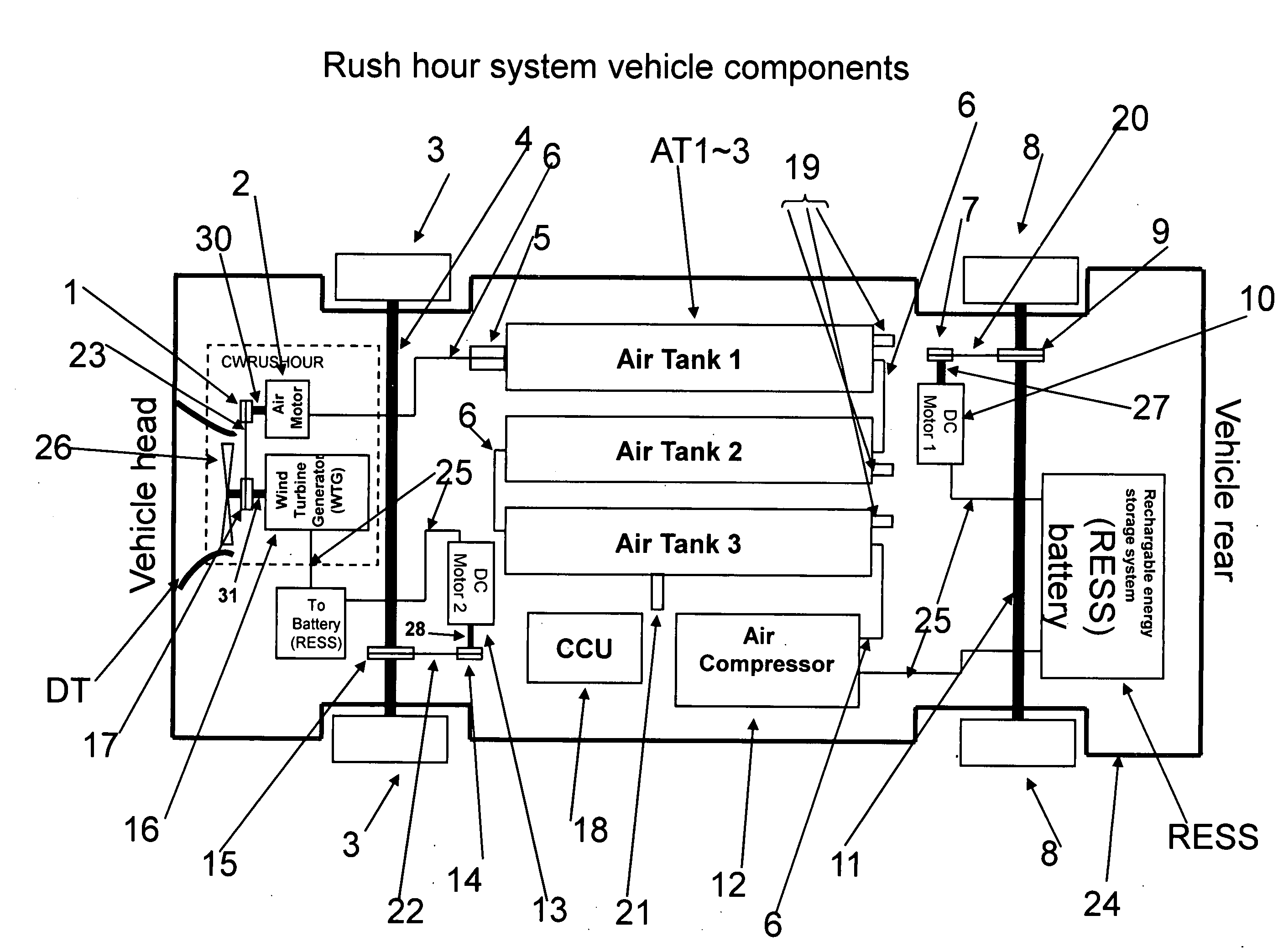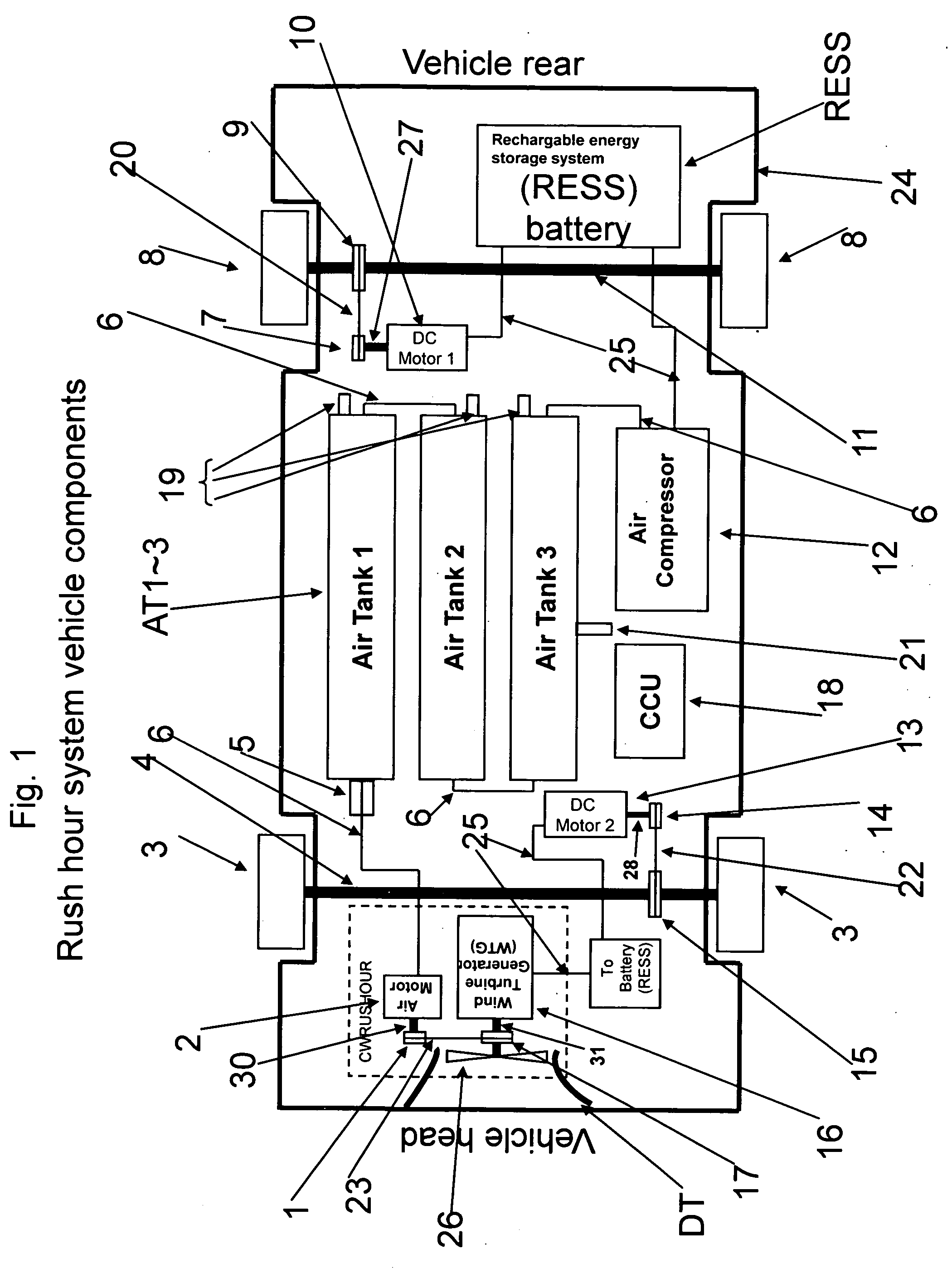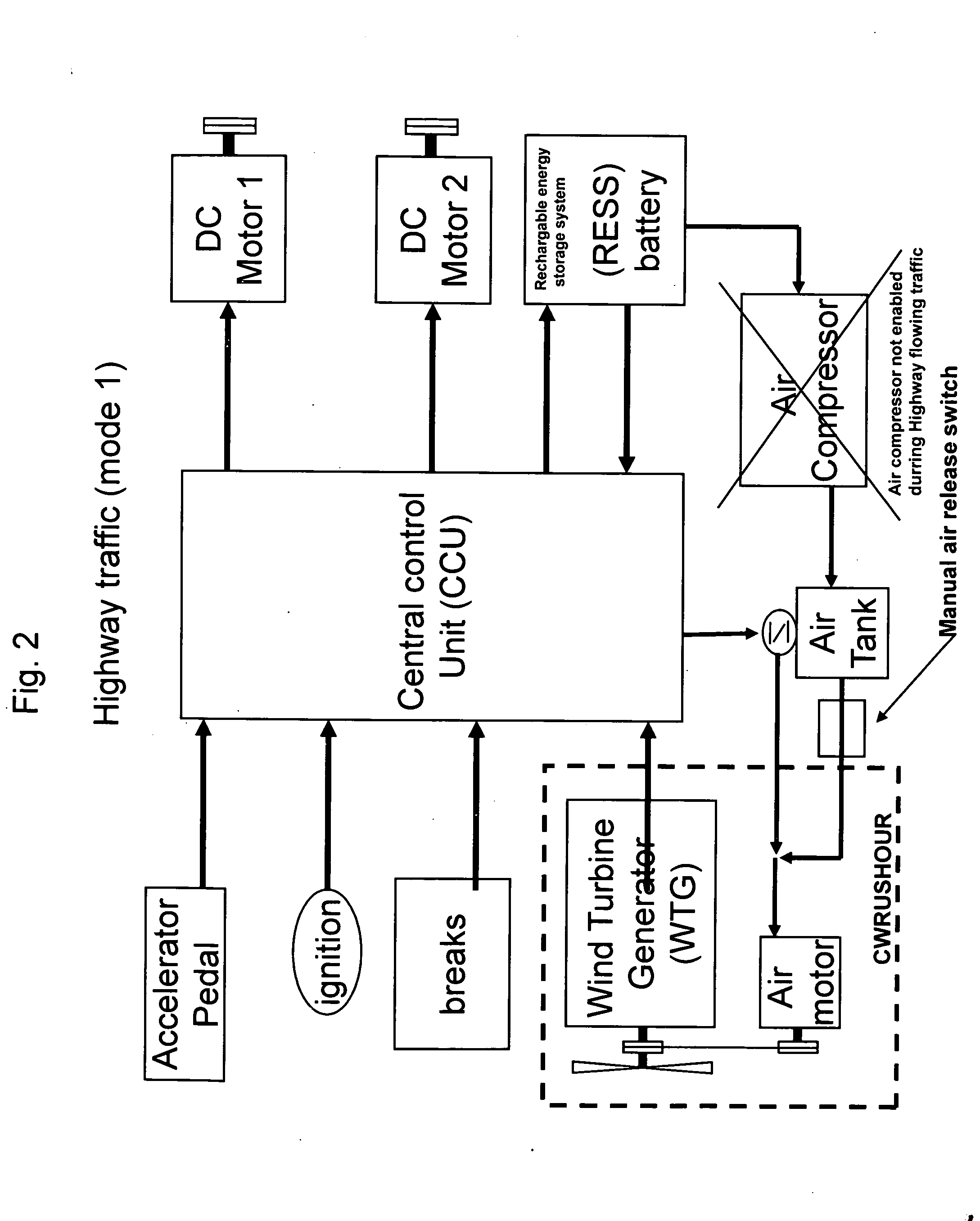To a degree, efforts to solve these problems conflict with one another.
However, higher
combustion temperatures in
gasoline-fueled engines lead to increase in certain undesirable pollutants, typically NO.
However, to date
ethanol has not become economically competitive with
gasoline, and consumers have not accepted
ethanol to any great degree.
Moreover, to make an alternate fuel such as
ethanol available to the extent necessary to achieve appreciable improvements in nationwide air quality and
fuel conservation would require immense costs for infrastructure improvements; not only the entire nation's
motor fuel production and
delivery system, but also the vehicle manufacture, distribution, and repair system, would have to be extensively revised or substantially duplicated.
To date, all such “straight electric” cars have had very limited range, typically no more than 150 miles, have insufficient power for acceleration and
hill climbing except when the batteries are substantially fully charged, and require substantial time for battery recharging.
The latest air vehicles are considered limited in mileage.
Thus, while there are many circumstances in which the limited range and extended recharging time of the batteries would not be an inconvenience, such cars are not suitable for all the travel requirements of most individuals.
Accordingly, an electric car would have to be an additional vehicle for most users, posing a substantial economic deterrent.
Moreover, it will be appreciated that in the United States most
electricity is generated in
coal-fired power plants, so that using electric vehicles merely moves the source of the
pollution, but does not eliminate it.
Furthermore, comparing the respective net costs per
mile of driving, electric vehicles are not competitive with ethanol-fueled vehicles, much less with conventional
gasoline-fueled vehicles.
Accordingly, all vehicles driven directly by an
internal combustion engine (other than certain single-speed vehicles using friction or centrifugal clutches, and not useful for normal driving) require a variable-ratio transmission between the engine and the wheels, so that the engine's torque can be matched to the road speeds and loads encountered.
It would not be practical to provide a
diesel locomotive, for example, with a multiple speed transmission, or a
clutch.
Moreover, such locomotives tend to be run at steady speeds for long periods of time.
However, such a direct drive vehicle would not achieve good
fuel efficiency in typical automotive use, involving many short trips, frequent stops in traffic as well as extended low-speed operation.
Further, such components add substantially to the cost and weight of the vehicle; in particular, an
electric motor capable of providing sufficient torque to meet all expected demand, e.g., to allow reasonable performance under acceleration, during hill-climbing and the like, is rather heavy and expensive.
Thus, series
hybrid vehicles have not been immediately successful.
This arrangement is a source of additional complexity, cost and difficulty, as two separate
modes of engine control are required.
Such a complex vehicle is unsuited for the automotive market.
Further, the
gear train shown by Berman et al appears to be quite complex and difficult to manufacture economically.
Furthermore, the primary means of battery charging disclosed by Hunt involves a further undesirable complexity, namely a
turbine driving the
electric motor in generator configuration.
More particularly, the latter Kawakatsu patent asserts that a single
electric motor sized to provide sufficient torque to propel the vehicle would not be capable of providing sufficient regenerative braking force; see col.
More specifically, for reasons of safety and in accordance with industry practice, currents in excess of about 50 amperes cannot be carried by the conventional plug-in connectors preferred for reasons of convenience and economy, but must be carried by much heavier, more expensive and less convenient fixed connectors (as used on conventional
starter and battery cable connections).
This arrangement would be complex and expensive to manufacture.
Kalberlah then compares various forms of parallel hybrids, with respect to his FIG. 4, and concludes that the most practical arrangement is one in which an
internal combustion engine drives a first pair of wheels, and an electric motor the second; more particularly, Kalberlah indicates that mechanical combination of the torque from an internal
combustion engine and an electric motor is impractical.
The Urban et al design appears to suffer from a number of significant defects.
Such components are clearly complex and expensive; further, torque
converters are notoriously inefficient.
Moreover, using the internal
combustion engine as the sole source of power for low-speed running would require it to be run at low speeds, e.g., at traffic lights, which is very inefficient and highly polluting.
(Various additional references suggest that excess torque can be used to charge batteries; if this were incorporated in the
Urban system, the engine might be run at a reasonably efficient output level while the vehicle was stationary, but this would lead to high levels of
noise and vibration.
On the other hand, Urban does suggest that the vehicle can be operated as a “straight electric” under low-speed conditions, but this requires the operator to provide an explicit control input; this complexity is unacceptable in a vehicle intended to be sold in quantity, as would be required in order to reach Urban's stated goals of reduction of
atmospheric pollution and reduced
energy consumption.
It will be appreciated by those of skill in the art that there are significant limitations inherent in the use of planetary gear sets as a means for connecting different sources, e.g., an internal combustion engine and an electric motor, to the drive wheels of a vehicle, namely, that unless the planetary gear set is effectively locked (anathematic to its use as a continuously-variable transmission, e.g., in the Toyota vehicle) it is capable of additive combination of shaft speeds, but not of output torque.
If the vehicle's operational mode is selected based solely on speed, as taught by Koide and Schmidt-Brucken, it will be incapable of responding to the operator's commands, and will ultimately be unsatisfactory.
Therefore the engine is never operated at less than 30% of MTO, and is thus never operated inefficiently.
Moreover, despite making reference to a “
vehicle driving torque demand Mv*”, which might be misunderstood to be equivalent to applicant's road load, Egami in fact does not determine the road load.
This would be a start at reducing emissions; however the cost of converting the existing fuel infrastructure would outweigh gaining public interest and confidence.
To date, most straight electric vehicles, require substantial time for battery recharging, have insufficient power for
hill climbing and acceleration except when the batteries are fully charged and have had very limited range; typically no more than 150 miles.
As long as there is a combustible engine that functions in any situation of any vehicle,
carbon dioxide emissions will never be fully eliminated.
Furthermore, the existing
hybrid vehicles have not been immediately successful at reducing
greenhouse emissions completely.
 Login to View More
Login to View More  Login to View More
Login to View More 


